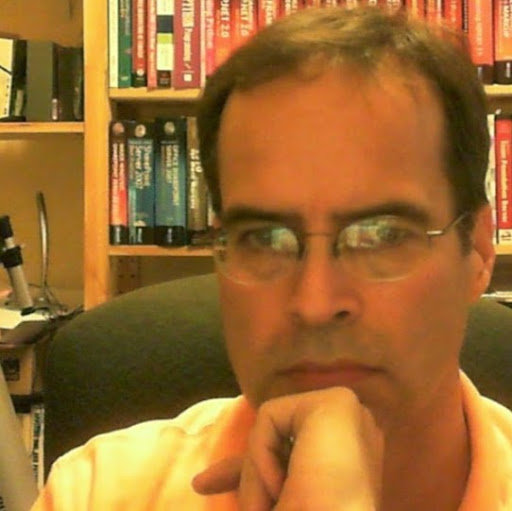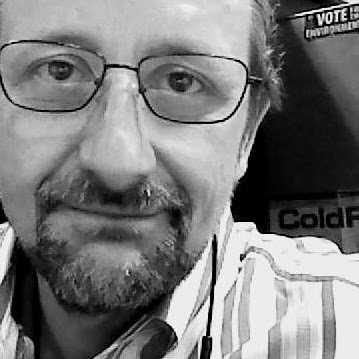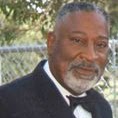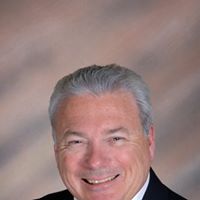David Wayne Scruggs
age ~68
from Maricopa, AZ
- Also known as:
-
- David Wade Scruggs
- David W Scruggs
David Scruggs Phones & Addresses
- Maricopa, AZ
- San Tan Valley, AZ
- San Clemente, CA
- Wahiawa, HI
- Colorado Springs, CO
- Columbia, MD
Medicine Doctors

David A. Scruggs
view sourceSpecialties:
Orthopaedic Surgery
Work:
Carrollton Orthopedic ClinicCarrollton Orthopaedics Clinic PC
204 Allen Memorial Dr STE 102, Bremen, GA 30110
(770)5370611 (phone), (770)8346118 (fax)
204 Allen Memorial Dr STE 102, Bremen, GA 30110
(770)5370611 (phone), (770)8346118 (fax)
Languages:
English
Spanish
Spanish
Description:
Mr. Scruggs works in Bremen, GA and specializes in Orthopaedic Surgery. Mr. Scruggs is affiliated with Tanner Medical Center Carrollton.
Us Patents
-
Golf Club Made Of A Bulk-Solidifying Amorphous Metal
view source -
US Patent:6685577, Feb 3, 2004
-
Filed:Oct 28, 1997
-
Appl. No.:08/963131
-
Inventors:David M. Scruggs - Oceanside CA 92057
William L. Johnson - Pasadena CA 91107
Atakan Peker - Aliso Viejo CA 92656 -
International Classification:A63B 5304
-
US Classification:473349, 473345
-
Abstract:A golf club is made of a club shaft and a club head. Either the club shaft or the club head is made at least in part of a bulk-solidifying amorphous metal. A preferred bulk-solidifying amorphous metal has a composition, in atomic percent, of from about 45 to about 67 percent total of zirconium plus titanium, from about 10 to about 35 percent beryllium, and from about 10 to about 38 percent total of copper plus nickel, plus incidental impurities, the total of the percentages being 100 atomic percent. The weights of the various club heads of a set, which have different volumes, may be established by varying the compositions and thence the densities of the bulk-solidifying amorphous alloys.
-
Joining Of Metals Using A Bulk Amorphous Intermediate Layer
view source -
US Patent:54825806, Jan 9, 1996
-
Filed:Jun 13, 1994
-
Appl. No.:8/258766
-
Inventors:David M. Scruggs - Oceanside CA
William L. Johnson - Pasadena CA
Jimmie B. Bolton - Conroe TX
Atakan Peker - Pasadena CA -
Assignee:Amorphous Alloys Corp. - Laguna Niguel CA
-
International Classification:B23K 3522
B23K10316 -
US Classification:148528
-
Abstract:Two pieces of metal are joined together using an amorphous metallic joining element. In the joining operation, the joining element is placed between the two pieces to be joined. The joining element and adjacent regions of the pieces being joined are given a joining processing sequence of heating to a joining temperature, forcing the two pieces together for a period of time, and cooling. The joining element has a composition that is amorphous after the processing is complete. The joining element composition is also selected such that, after interdiffusion of elements from the pieces being joined into the joining element during processing, the resulting composition is amorphous after cooling.
-
Titanium-Containing Ferrous Hard-Facing Material Source And Method For Hard Facing A Substrate
view source -
US Patent:56958250, Dec 9, 1997
-
Filed:May 31, 1995
-
Appl. No.:8/457395
-
Inventors:David M. Scruggs - Oceanside CA
-
Assignee:Amorphous Technologies International - Laguna Niguel CA
-
International Classification:C23C 406
-
US Classification:427449
-
Abstract:A hard-facing material source is an article whose net composition is, in weight percent, from about 20 to about 35 percent chromium, from about 2 to about 5 percent boron, from about 1 to about 2. 5 percent silicon, from 0 to about 0. 5 percent carbon, from about 0. 5 to about 2 percent manganese, and from about 0. 2 to about 1. 0 percent titanium, balance iron and incidental impurities. The article may be a powder or a hollow tube with a powder packed therein. The hard-facing material source is thermally applied to a substrate by spraying or welding.
-
Hoist Motor Control System
view source -
US Patent:42041422, May 20, 1980
-
Filed:Dec 27, 1977
-
Appl. No.:5/864371
-
Inventors:David M. Scruggs - San Juan Capistrano CA
-
International Classification:H02K 1100
-
US Classification:318257
-
Abstract:An improved hoist control system wherein a D. C. motor is employed to drive the hoist, and a remote hand-held control is utilized to vary the motor speed and direction of rotation. The hand control comprises an A. C. to D. C. variable transformer which is controllable by a trigger mechanism, a three-pole double throw switch for up-off-down control of the motor, circuit on-off switches, a meter for reading the hoist load, and an interlock device for limiting the actuation of the motor control switch if the trigger is depressed.
-
High Pressure Seal Joint
view source -
US Patent:44847505, Nov 27, 1984
-
Filed:Nov 3, 1983
-
Appl. No.:6/548542
-
Inventors:David M. Scruggs - San Juan Capistrano CA
-
Assignee:Dresser Industries, Inc. - Dallas TX
-
International Classification:F16J 900
F16K 4100
F16L 5300
F16L 1300 -
US Classification:277 9
-
Abstract:A joint includes two members with facing surface sections sealed together by a meltable seal material contained within a reservoir between the surface sections. A non-capillary recess in one of the members adjacent one surface section keeps the seal material from flowing out of the reservoir between the members by capillary action when the seal material is melted to form or reform the seal between the members.
-
Electrodeposition Of Nickel-Tungsten Amorphous And Microcrystalline Coatings
view source -
US Patent:53892267, Feb 14, 1995
-
Filed:Jun 30, 1993
-
Appl. No.:8/085501
-
Inventors:David M. Scruggs - Oceanside CA
Gerald A. Croopnick - Trabuco Canyon CA -
Assignee:Amorphous Technologies International, Inc. - Laguna Niguel CA
-
International Classification:C25D 356
C25D 550 -
US Classification:205 50
-
Abstract:A nickel tungsten-containing coating is electrodeposited onto a substrate from an electrodeposition bath having in solution from about 0. 034 to about 0. 047 moles per liter of nickel, from about 0. 15 to about 0. 28 moles per liter of tungsten, from about 0. 13 to about 0. 43 moles per liter of hydroxycarboxylic acid, and 0 or from about 0. 077 to about 0. 15 moles per liter of boron. The bath has a pH of from about 6 to about 9, and the electrodeposition is preferably accomplished at a temperature of from about 100. degree. F. to about 140. degree. F.
-
Materials Transformable From The Nonamorphous To The Amorphous State Under Frictional Loadings
view source -
US Patent:47255129, Feb 16, 1988
-
Filed:Jun 8, 1984
-
Appl. No.:6/618885
-
Inventors:David M. Scruggs - San Juan Capistrano CA
-
Assignee:Dresser Industries, Inc. - Dallas TX
-
International Classification:B05D 306
B32B 1500
C25D 510 -
US Classification:428678
-
Abstract:A process for protecting an article from wear, wherein a frictionally transformable material is provided at the surface of the article, and then the surface of the article is subjected to frictional wear. The wear transforms the outermost layer of the material to the amorphous state, which is more wear resistant and corrosion resistant than is the material in its nonamorphous state. As the material is worn away gradually, the frictional transformation continues, thereby replenishing the amorphous outermost layer, so that a protective outermost layer remains. A particularly satisfactory frictionally transformable material consists essentially of from about 40 to about 75 weight percent of a first component selected from the group consisting of iron, cobalt, and combinations thereof; more than about 20 weight percent of a second component selected from the group consisting of chromium, molybdenum, tungsten, niobium, vanadium, and combinations of chromium, molybdenum, tungsten, niobium, vanadium, and titanium; and from about 2 to about 6 weight percent of a third component selected from the group consisting of boron, carbon, and combinations thereof.
-
Extended Surface Area Amorphous Metallic Material
view source -
US Patent:46083197, Aug 26, 1986
-
Filed:Sep 10, 1984
-
Appl. No.:6/649070
-
Inventors:Gerald A. Croopnick - Trabuco Cyn CA
David M. Scruggs - San Juan Capistrano CA -
Assignee:Dresser Industries, Inc. - Dallas TX
-
International Classification:C22F 100
C21D 900
C23F 100
B01J 3200 -
US Classification:428613
-
Abstract:An extended surface area amorphous metallic article and process for preparation thereof, wherein a homogeneous amorphous metallic alloy is phase-separated to produce two interconnected, internally continuous, amorphous phases, and then one phase is removed. Preferably, the homogeneous metallic alloy has a composition associated with a eutectic between at least two solid solutions. Phase separation is accomplished by exposing the alloy to a temperature which is below the crystallization temperature and also below the phase separation temperature for that composition. Removal of one phase may be accomplished by leaching in a liquid solution, or by vaporization. The resulting article has an extended surface area of the amorphous phase that is not removed. A porous membrane having extended internal surface area may be prepared by continuing the removal process to the removal of one phase throughout the entire thickness of the article. The extended surface area articles, wherein the extended surface area is of an amorphous metal, enjoy particular advantages when used as catalysts.
Name / Title
Company / Classification
Phones & Addresses
P, Director
SOUTHWEST SALSA FACTORY INC
PO Box 14047, Irvine, CA 92623
License Records
David L Scruggs
License #:
E026935 - Expired
Category:
Emergency medical services
Issued Date:
Jan 29, 2010
Expiration Date:
Apr 30, 2016
Type:
Santa Cruz County EMS Agency
Resumes

Field Application Engineer Samtec
view sourcePosition:
Field Application Engineer at Samtec Inc
Location:
Dacula, Georgia
Industry:
Electrical/Electronic Manufacturing
Work:
Samtec Inc - Georgia since Jul 2011
Field Application Engineer
Cornerstone Sales Oct 2007 - Jul 2011
Regional Manager
New Age / Kruvand Apr 2004 - Oct 2007
Outside Sales
Field Application Engineer
Cornerstone Sales Oct 2007 - Jul 2011
Regional Manager
New Age / Kruvand Apr 2004 - Oct 2007
Outside Sales
Education:
The University of Georgia 1995 - 1999
Bachelor of Business Administration, International Business
Bachelor of Business Administration, International Business
Skills:
Product Development
Key Account Management
New Business Development
Sales Management
Electronics
Key Account Management
New Business Development
Sales Management
Electronics

David Scruggs
view sourceLocation:
United States

David Scruggs
view sourceLocation:
United States
Googleplus

David Scruggs
Work:
Salesforce.com - Principal Platform Engineer (12)

David Scruggs
Lived:
San Tan Valley, AZ

David Scruggs

David Scruggs

David Scruggs

David Scruggs

David Scruggs
Myspace

David Scruggs
view source
David Scruggs
view source
David Scruggs
view source
David Scruggs
view source
David Scruggs Jr.
view source
David Lee Scruggs
view source
Kim David Scruggs
view source
David Scruggs
view sourceClassmates

David Scruggs
view sourceSchools:
Tennessee School for the Deaf Knoxville TN 1992-1996
Community:
Elizabeth Davenport, Rebecca Britt, Preston Branch, Tim Troutman

David Scruggs
view sourceSchools:
Chesnee High School Chesnee SC 1967-1971
Community:
Kay Suttles, Randall Buchanan

David Scruggs
view sourceSchools:
Central Baptist High School Memphis TN 1987-1991
Community:
Sherry Little

David Scruggs
view sourceSchools:
Ridgeway High School Memphis TN 1978-1982
Community:
Terri Werne, Vicki Coffman

David Scruggs
view sourceSchools:
Oakland Technical High School Oakland CA 1988-1992
Community:
Jeffrey Elliott, Anthony Boyd, Kimberlea Evans

David Scruggs
view sourceSchools:
Amelon Elementary School Madison Heights VA 1973-1978

David Scruggs
view sourceSchools:
Excel High School Excel AL 1952-1956
Community:
Ed Parrish, Jim Palmer

David Scruggs
view sourceSchools:
Tomlinson Junior High School Lawton OK 1988-1991
Community:
Angel Williams, Chan Ly, Jeremy Doll
Youtube
Flickr
Plaxo

David Scruggs
view sourceSTL

David Scruggs
view sourceCir
Get Report for David Wayne Scruggs from Maricopa, AZ, age ~68













